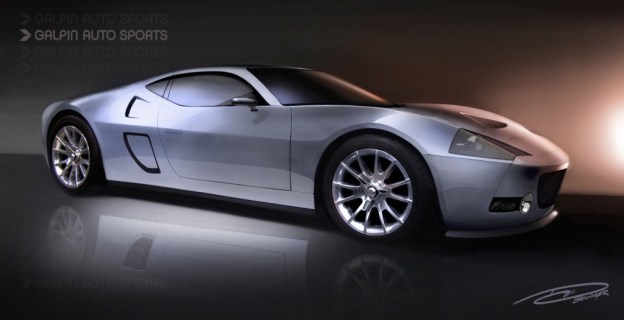 The Ford GT may get a second chance at life, thanks to one of the Blue Oval’s most loyal dealers. Galpin Auto Sports, the custom car arm of the Galpin Motors dealership network, is looking to resurrect the Le Mans-inspired supercar. Galpin wants to build a car that is so faithful to the original that it will seem as if the GT never went out of production.
The Ford GT may get a second chance at life, thanks to one of the Blue Oval’s most loyal dealers. Galpin Auto Sports, the custom car arm of the Galpin Motors dealership network, is looking to resurrect the Le Mans-inspired supercar. Galpin wants to build a car that is so faithful to the original that it will seem as if the GT never went out of production.
Galpin calls its concept the GTR-1, which is fitting, because it blends styling elements of the GT with those of the Shelby GR-1 concept car. Like the GR-1, the classic ‘60s shape of the GT is still there, but it’s been reinterpreted in a more modern, minimalist way.
The car will still be recognizable as a GT, thanks to its mid-engined layout and low roofline. The GT was inspired by Ford’s GT40 Le Mans racer, which got its name from being only 40 inches tall.
The GT40 was Henry Ford II’s way of sticking it to Ferrari after Enzo Ferrari changed his mind about selling his company to Ford. The GT40 won Le Mans, a race traditionally dominated by Ferrari, four consecutive times (1966 to 1969).
Given that heritage, it’s not surprising that Ford built another GT. Previewed by the GT40 concept at the 2002 Detroit Auto Show, the GT went into production in 2005 as a road car, this time taking on the Ferrari 360 and Lamborghini Gallardo.
Just over 4,000 GTs were produced. They all sported a 5.4-liter supercharged V8, related to the motor from the SVT Lightning pickup truck, with 550 horsepower and 500 pound-feet of torque. The GT could reach 60 mph in as little as 3.2 seconds, and had a top speed of 212 mph.

Located in Van Nuys, California. Galpin Auto Sports customizes cars for the Galpin family of dealers, which sells everything from Subarus to Spykers. Galpin claims the title of largest volume Ford dealer in the world, and Galpin Auto Sports was the shop used for the fifth and sixth seasons of Pimp My Ride.
Both the 1960s GT40 and the 2005 GT were instances where Ford poured all of its resources into achieving a single goal: ultimate performance. Without the same focus, will the GTR-1 have the same character as those cars? Or will it be a glorified GT knock off?


